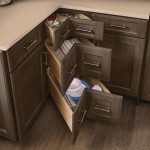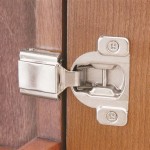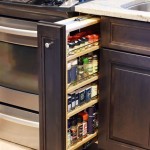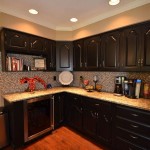Homemade Cabinet Jacks for Stairs: A DIY Guide
When embarking on a home improvement project involving stairs, the need for reliable support and stability is paramount. Cabinet jacks, also known as stair jacks, are essential tools that provide temporary support for stair treads while renovations or repairs are underway. While commercially available cabinet jacks are a convenient option, crafting your own from readily accessible materials offers a cost-effective and customizable solution. This article will delve into the process of building homemade cabinet jacks for stairs, providing a detailed guide with easy-to-follow instructions and valuable tips.
Choosing the Right Materials
The foundation of any successful DIY project lies in selecting the appropriate materials. For homemade cabinet jacks, sturdy lumber is the primary component. Selecting 2x4s or 2x6s as the primary material offers a balance of strength and affordability. The choice of wood species depends on the weight load anticipated and personal preferences. For example, hardwoods like oak or maple are known for their durability, while softwoods like pine are more readily available and work well for lighter loads.
An essential element of a cabinet jack is a strong, adjustable support mechanism. This can be achieved with various materials, including:
- Threaded Rod: A threaded rod provides precise adjustment and reliable support. It can be sourced from hardware stores or online retailers.
- Screw Jacks: These compact jacks offer adjustable height and are commonly used in furniture and woodworking applications. They provide a simple and effective means of adjusting the height of the jack.
- Lever Jacks: For heavy-duty applications, lever jacks offer significant lifting capacity. They are generally larger and require more space but provide robust support.
Assembling the Cabinet Jack Frame
Once the materials are gathered, construction begins with assembling the frame. The following steps outline the process:
- Cutting the Lumber: Measure and cut the lumber according to the desired height and width of the cabinet jack. Ensure precise cuts for a stable and sturdy structure.
- Creating the Base: Construct the base of the cabinet jack using the previously cut lumber pieces. Secure the base using wood screws or lag bolts. Ensure the base is level and provides a solid foundation.
- Adding the Uprights: The uprights provide the vertical support for the jack. Attach the uprights to the base securely using multiple screws or bolts. Ensure the uprights are parallel and perpendicular to the base.
- Building the Top Plate: Cut and attach the top plate to the uprights. The top plate creates a platform for the adjustable support mechanism.
- Reinforcing the Frame: For added stability, consider incorporating diagonal braces to the frame. These braces will prevent the frame from twisting or bowing under load.
Installing the Adjustable Support Mechanism
The adjustable support mechanism is the heart of the cabinet jack. The method of installation depends on the chosen mechanism:
- Threaded Rod: Drill holes in the top plate and base to accommodate the threaded rod. Secure the threaded rod with nuts and washers on both ends. Use a threaded rod with a length that provides enough adjustment range.
- Screw Jacks: Secure the screw jacks to the top plate, ensuring they are centered and aligned. The base of the screw jacks should be securely fastened to the top plate. Use lag screws or bolts for added strength.
- Lever Jacks: If using lever jacks, create a solid platform on the top plate for the jack to sit securely. Ensure the platform is wide enough to support the lever jack's base while still allowing for smooth operation.
Essential Considerations for Homemade Cabinet Jacks
While building homemade cabinet jacks offers cost savings and customization, there are crucial factors to consider:
Weight Capacity
The weight capacity of a cabinet jack depends on the materials used, the size of the frame, and the strength of the adjustable support mechanism. Carefully assess the weight load the jack will be subjected to and choose materials accordingly.
Stability and Safety
Ensuring the cabinet jack remains stable and safe during use is paramount. Securely fasten all components and use robust materials. Regularly inspect the jack for any signs of wear or damage.
Customization
Homemade cabinet jacks offer the advantage of customization. Adjust the height, width, and adjustable support mechanism to suit the specific requirements of your project.
Building homemade cabinet jacks for stairs empowers you to create a cost-effective and customized solution for your home improvement projects. By following the detailed instructions, selecting suitable materials, and considering essential considerations, you can confidently construct durable and reliable support for your stairs and ensure a safe and successful renovation.

Super Wicked Awesome Cabinet Jacks Thisiscarpentry

Super Wicked Awesome Cabinet Jacks Thisiscarpentry

Super Wicked Awesome Cabinet Jacks Thisiscarpentry

Making Your Own Cabinet Jack

Super Wicked Awesome Cabinet Jacks Thisiscarpentry

Super Wicked Awesome Cabinet Jacks Thisiscarpentry

Super Wicked Awesome Cabinet Jacks Thisiscarpentry

Super Wicked Awesome Cabinet Jacks Thisiscarpentry

Making Your Own Cabinet Jack

Diy Server Rack Plans
Related Posts








